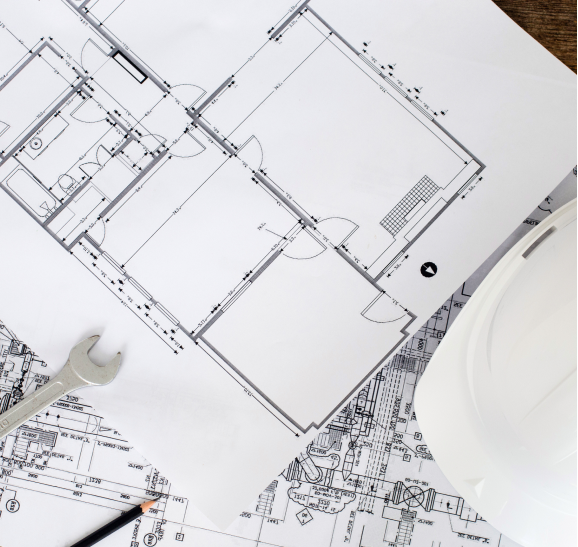Optimize workflows with our Project BIM Coordination service. Seamlessly integrate disciplines, detect clashes, and enhance collaboration for smoother construction.
Key features include seamless multi-disciplinary coordination, advanced clash detection, 4D/5D integration, centralized document management, VDC techniques, and rigorous quality assurance.
We facilitate coordination meetings and workshops to align the efforts of various project disciplines, including architecture, structure, MEP and more.
We ensure BIM models meet industry standards and project requirements through rigorous QA/QC procedures for accuracy and reliability.
We integrate time and cost data into BIM models, allowing stakeholders to visualize project schedules and budgets alongside the 3D model
We centralize project documentation within the BIM environment, ensuring that all stakeholders have access to the latest information, drawings, and specifications.
Our BIM coordinators use VDC techniques to simulate construction processes, identify issues, and optimize workflows for efficiency.
We use advanced BIM software to integrate models, detect clashes, and resolve conflicts preemptively, avoiding construction delays.
Other benefits are reduced cost, better customer experience, lower operational risk and improved internal processes that can be applied over existing IT systems.


Facilitates seamless communication and collaboration among project stakeholders, fostering a more cohesive team environment.
Identifies clashes and conflicts in the design phase, allowing for early resolution and preventing costly rework during construction.
Optimizes project workflows and streamlines processes, leading to increased efficiency and reduced project timelines.
Minimizes the likelihood of design errors and construction delays, ultimately resulting in cost savings for the project.

Several challenges can arise when attempting to achieve successful BIM coordination:

Most asked questions for BIM Coordination
BIM coordination involves integrating BIM models from different disciplines and addressing conflicts that arise between them. For instance, if ductwork intersects with electrical wires, a BIM coordinator employs clash detection to pinpoint the problem and collaborates with the coordination team to devise solutions.
The terms BIM Model and BIM are interchangeable, representing the comprehensive benefits provided by Building Information Modeling (BIM) to AEC (Architecture, Engineering, and Construction) professionals.
Understanding the essence of BIM is crucial, as it has revolutionized the operations of the construction industry.
1. Enhanced Efficiency:
BIM models offer a virtual depiction of the entire building, ensuring clarity in project scope and early detection of clashes. This preemptive approach minimizes rework during construction, saving both time and money.
2. Improved Project Outcomes:
The adoption of BIM has resulted in overall project improvement beyond cost and time efficiencies. Factors like personal satisfaction, enhanced understanding, and easy communication contribute to smoother project flow.
3. Architectural Advantages:
Before BIM, architects faced repetitive reconstruction and client satisfaction challenges. However, BIM and computer-aided models have streamlined this process, allowing architects to make changes efficiently and accurately.
4. Benefits for All Participants:
BIM facilitates ease of understanding and collaboration for fabricators, contractors, MEP Engineers, owners, and structural engineers. From material requirements to coordination, every project department benefits from BIM.
5. Information Accessibility:
BIM enables the generation, review, and sharing of detailed construction drawings, fostering better collaboration among project stakeholders. This wealth of information enhances project coordination and execution.
Challenges Associated with BIM Implementation:
1. Resistance to Change: Embracing BIM necessitates a significant departure from traditional construction methods, leading to potential resistance from stakeholders accustomed to conventional practices.
2. Skilled Workforce Shortage: BIM relies on a skilled workforce, and the industry may face a shortage of professionals equipped with the requisite expertise to effectively implement BIM.
3. Integration Complexity: Implementing BIM often involves integrating with existing systems, a process that can be intricate and time-intensive, adding complexity to the transition.
4. Cost Considerations: BIM implementation entails significant costs, including technology investment and training expenses, which may exceed the budgetary constraints of some organizations.
5. Legal and Contractual Concerns: BIM adoption may raise legal and contractual issues, such as ownership rights to models and liability attribution for errors or discrepancies.
6. Data Management Challenges: BIM generates vast amounts of data, posing challenges in effective management, especially when multiple stakeholders are involved in the project.
7. Interoperability Issues: Compatibility issues between BIM software and tools may arise, complicating collaboration and communication among stakeholders utilizing different software platforms.
Artificial intelligence (AI) is rapidly emerging as a transformative force in the construction sector, offering a broad array of applications. AI encompasses the creation of intelligent agents capable of reasoning, learning, and autonomous action, presenting immense potential to revolutionize Building Information Modeling (BIM) practices.
AI-driven innovations are enhancing BIM workflows across various fronts. Firstly, AI facilitates the automation of BIM modeling processes, particularly in generating models from laser-scanned point cloud data, thereby expediting model creation for intricate projects.
Furthermore, AI contributes to improving clash detection within BIM models by automatically identifying conflicts between different elements, aiding in early issue resolution during the design phase and ultimately saving time and costs.
Additionally, AI-driven quantity takeoff capabilities streamline material quantity extraction from BIM models, enhancing accuracy in cost estimation and procurement processes while boosting efficiency.
Moreover, AI-driven scheduling and sequencing optimization optimize project timelines and task sequences, reducing project durations and enhancing overall efficiency.
Lastly, AI-driven quality control mechanisms automatically scrutinize BIM models for quality issues, ensuring accuracy and reliability by identifying missing or incomplete information.
Looking ahead, AI is poised to assume an even greater role in BIM practices, fostering improved communication, risk mitigation, and decision-making throughout the project lifecycle. AI-powered BIM tools are anticipated to enhance collaboration among stakeholders, facilitating better outcomes in construction projects.
Define and Communicate the Change Management Process: Establish clear protocols for managing changes and communicate them across the project team to ensure alignment and understanding.
Utilize a Version Control System: Implement a robust version control system to track changes, maintain document integrity, and facilitate collaboration among team members.
Apply Design for Change Principles: Incorporate design principles that prioritize adaptability and flexibility to accommodate changes seamlessly throughout the project lifecycle.
Conduct Regular Reviews and Tests: Schedule regular reviews and testing phases to identify potential issues early on, enabling timely adjustments and revisions as needed.
Document and Communicate Changes and Revisions: Maintain comprehensive documentation of all changes and revisions, and ensure transparent communication to keep stakeholders informed throughout the process.
Learn and Improve from Changes and Revisions: Leverage insights gained from changes and revisions to enhance project processes, mitigate risks, and optimize future design iterations.
Yes, BIM coordination can be implemented in various types of construction projects, including residential, commercial, industrial, and infrastructure projects.